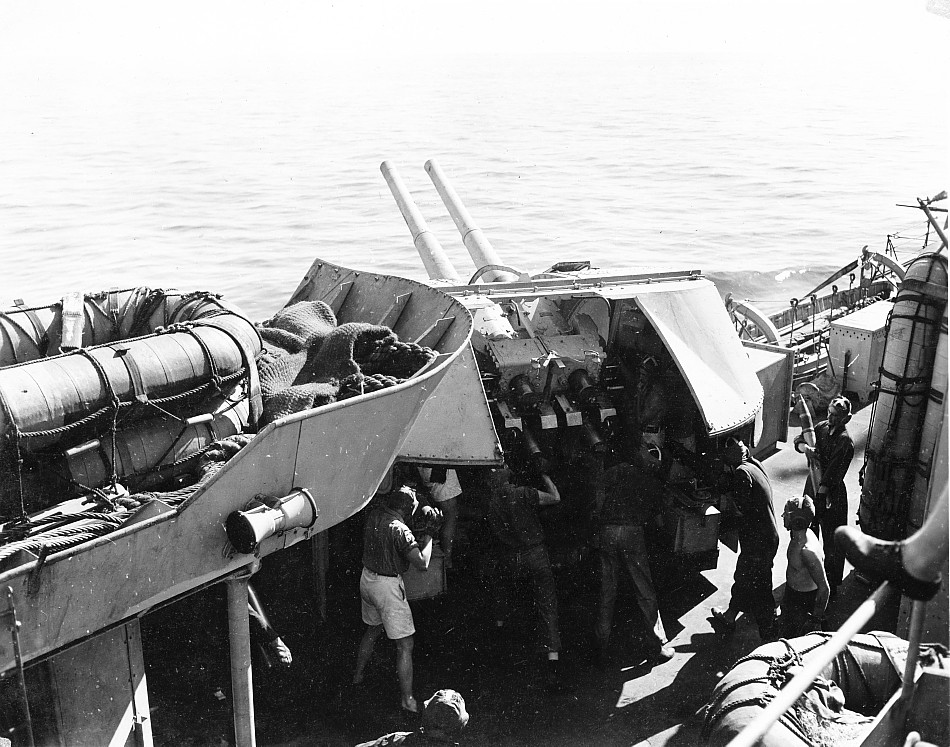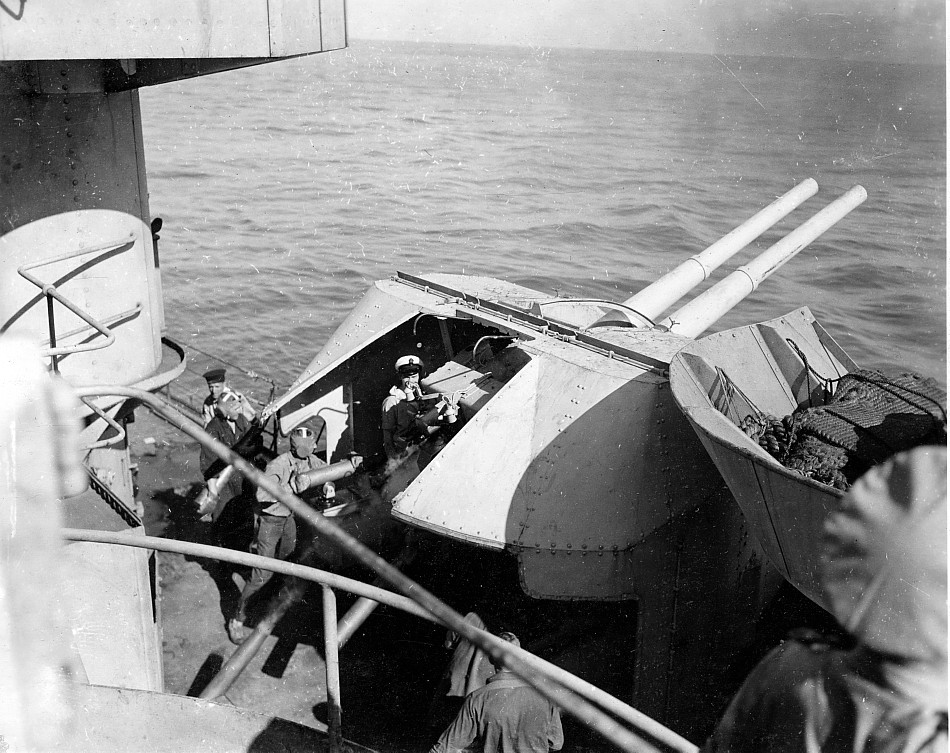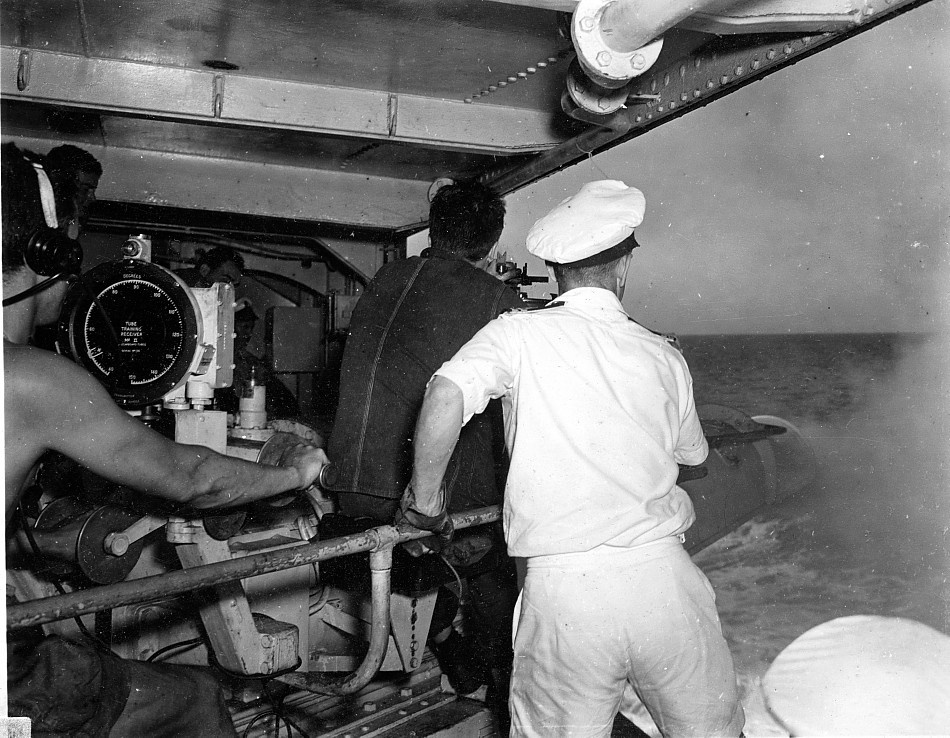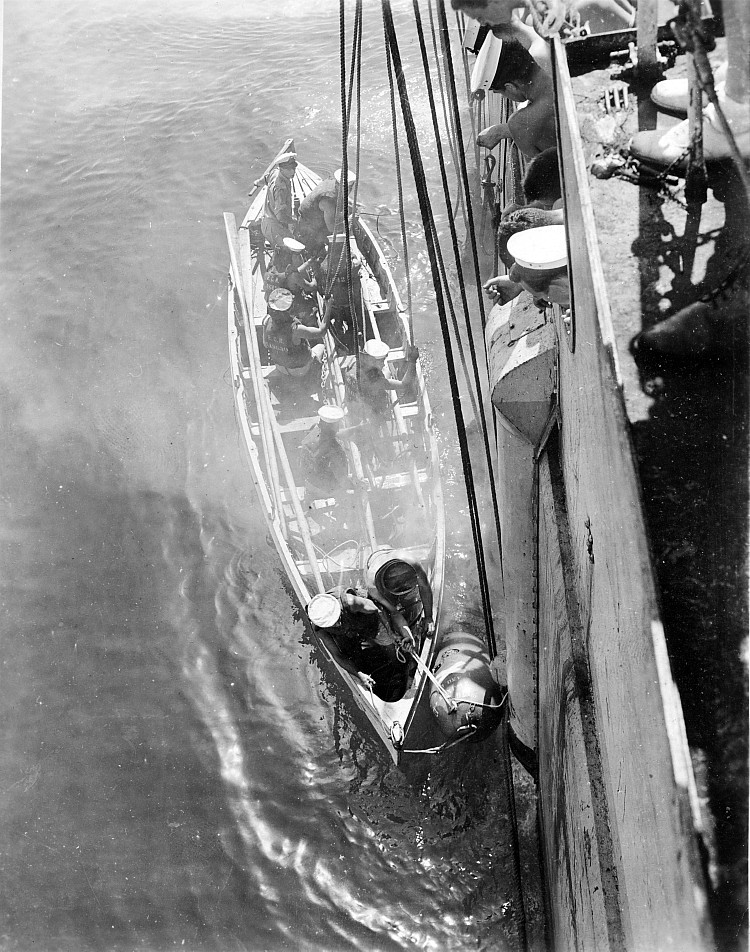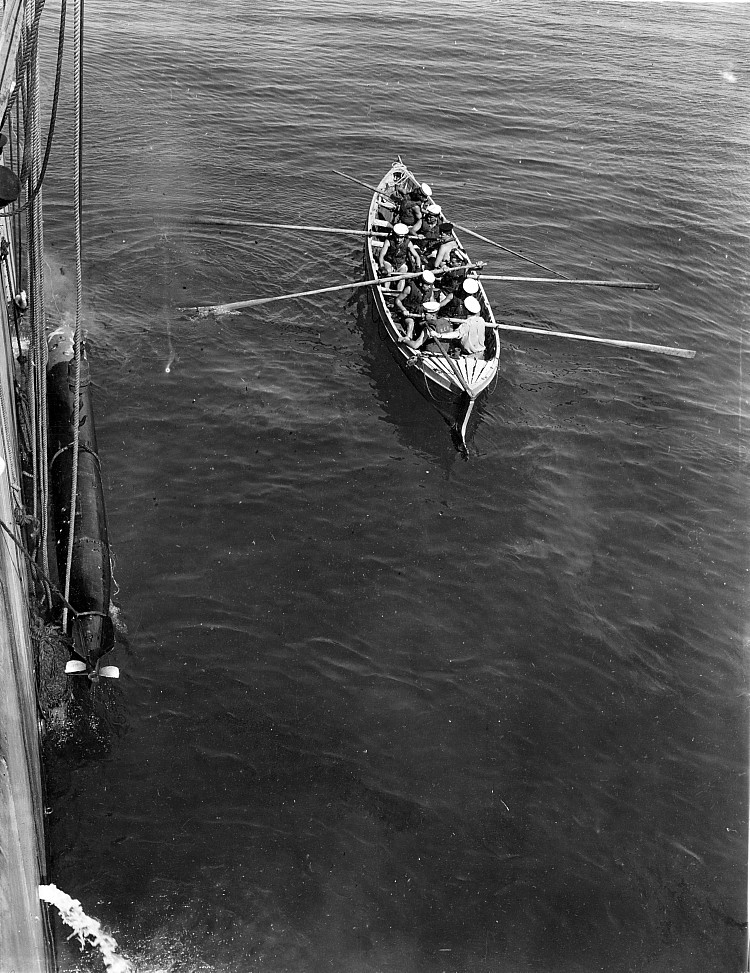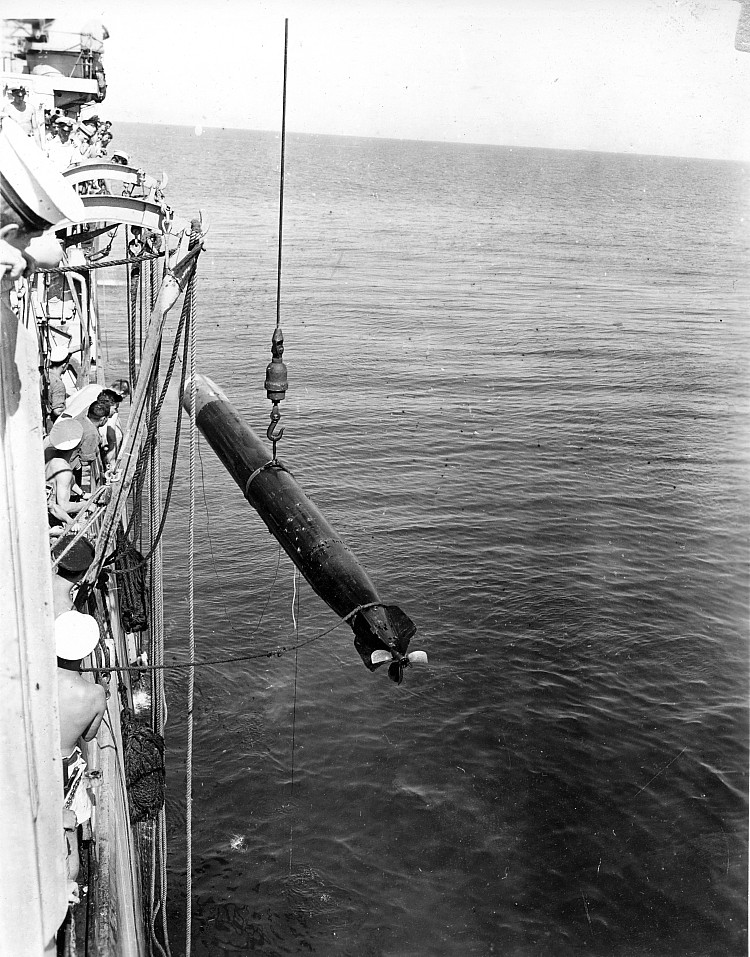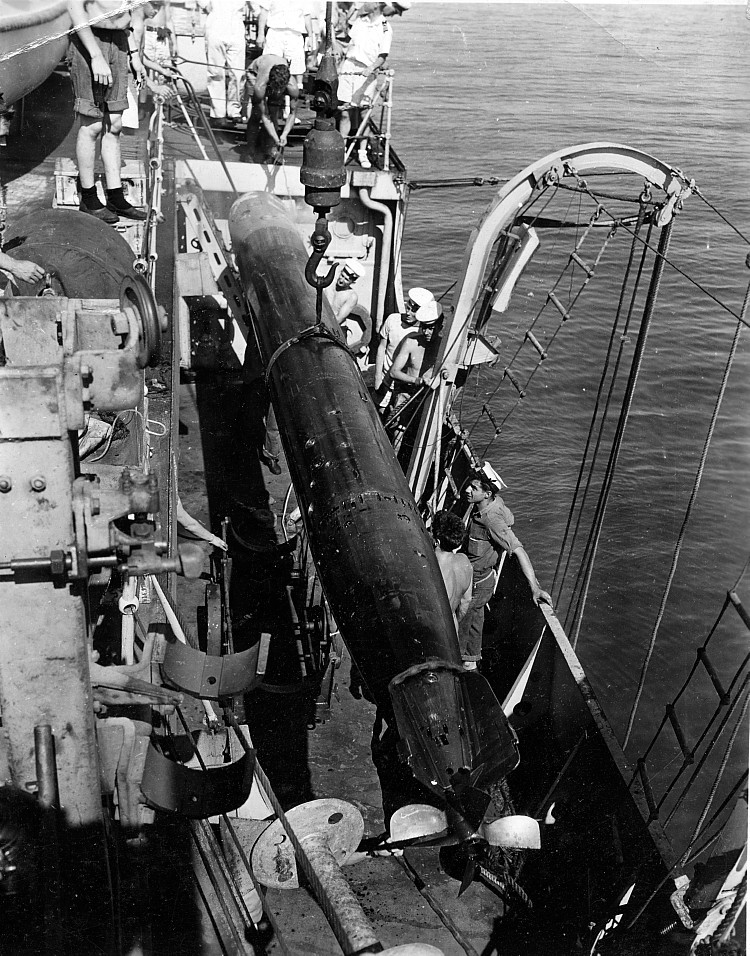HMCS Ontario, Weapons & Torpedo Training, 1945.
Negative #ON-0018 : 13 July 1945 : Gun crew on HMCS Ontario.
Negative #ON-0018-1 : 13 July 1945 : Gun crew on HMCS Ontario.
Negative #ON-0022 : 20 July 1945 : Firing a 21-inch (diameter) torpedo.
Negative #ON-0022-1 : 20 July 1945 : Whaler crew attaches a torpedo to lines from HMCS Ontario.
Negative #ON-0022-2 : 20 July 1945 : Whaler leaves as HMCS Ontario starts to haul torpedo from the water.
Negative #ON-0022-3 : 20 July 1945 : Torpedo is about half way up.
Negative #ON-0022-4 : 20 July 1945 : Torpedo is lowered to the deck of HMCS Ontario.
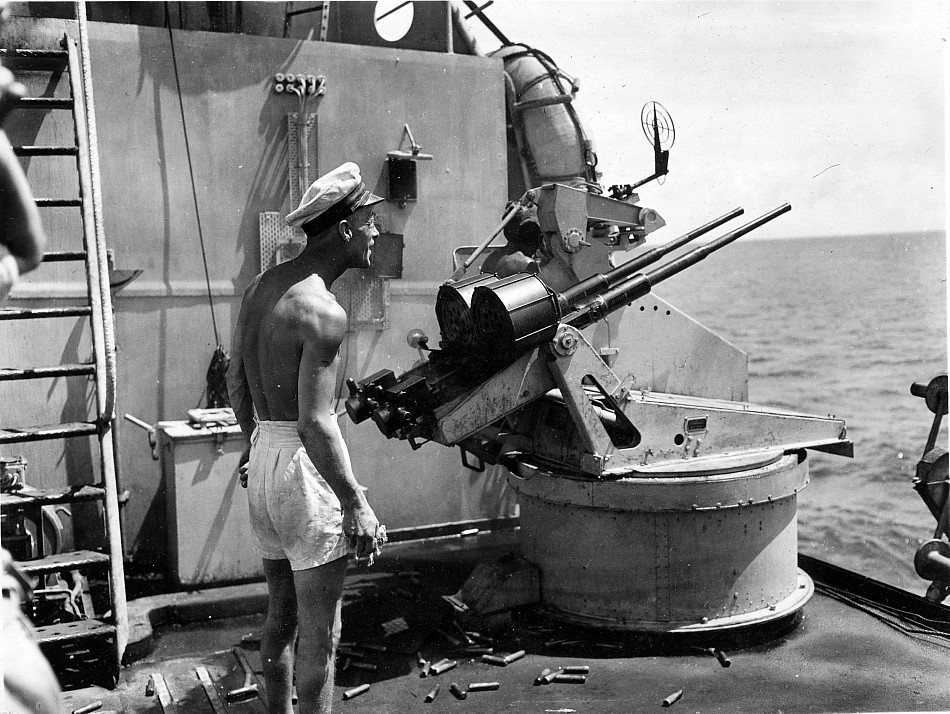
Negative ON-0037 : Twin Oerlikon anti-aircraft guns on HMCS Ontario.
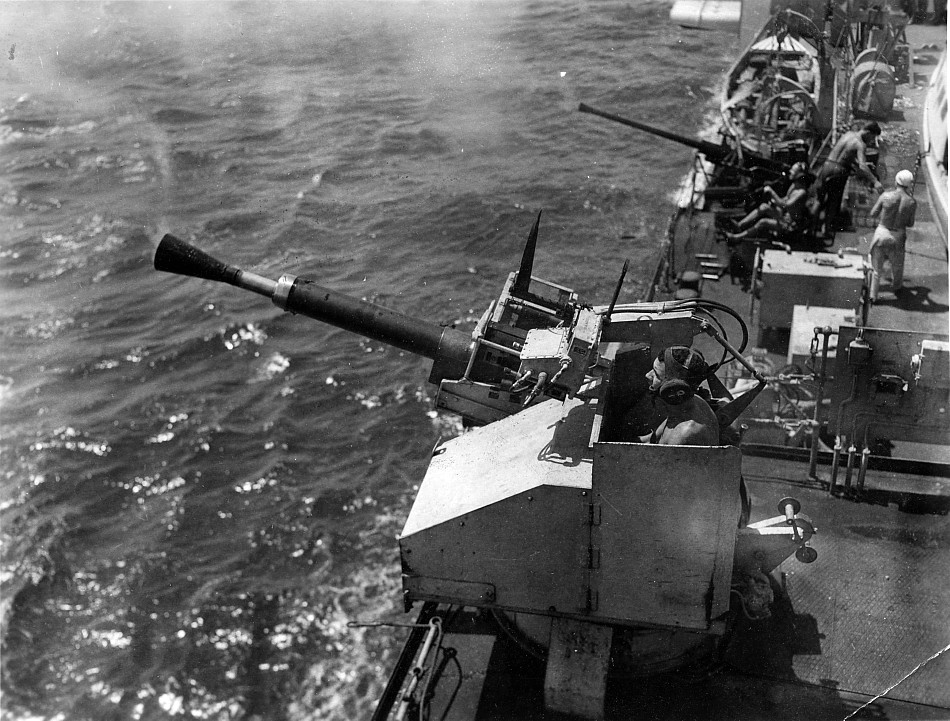
Negative #ON-0037-1 : Ack-Ack gun crews on HMCS Ontario.
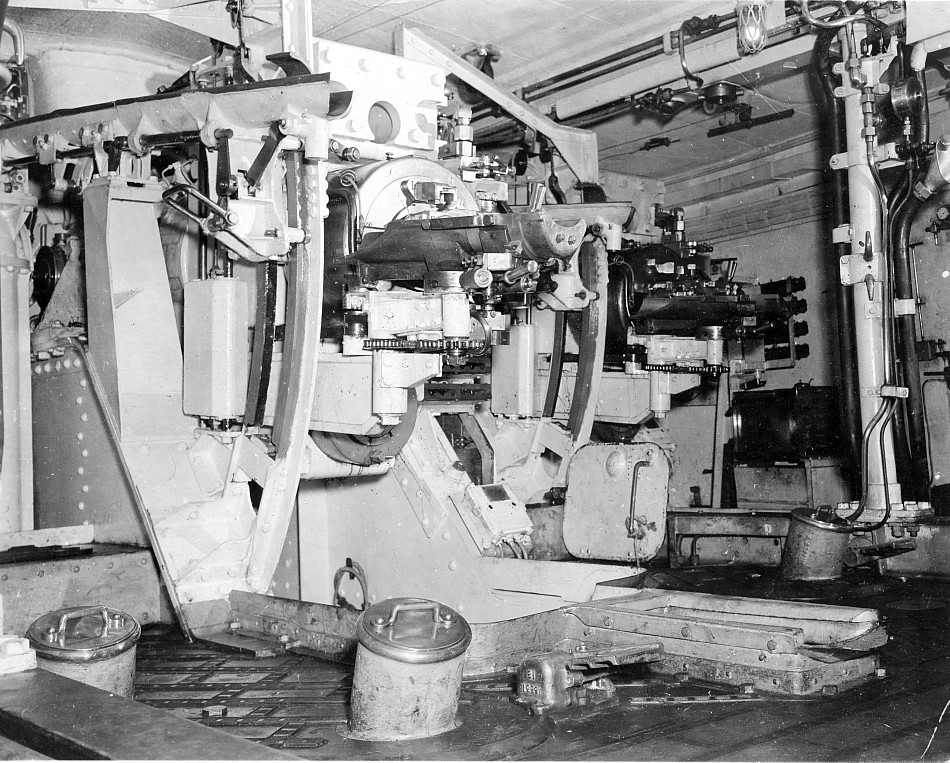
Negative #ON-0029 : Inside the turret of the main battery guns (6-inch MK XXIII). Identified as "Y" gun-house.
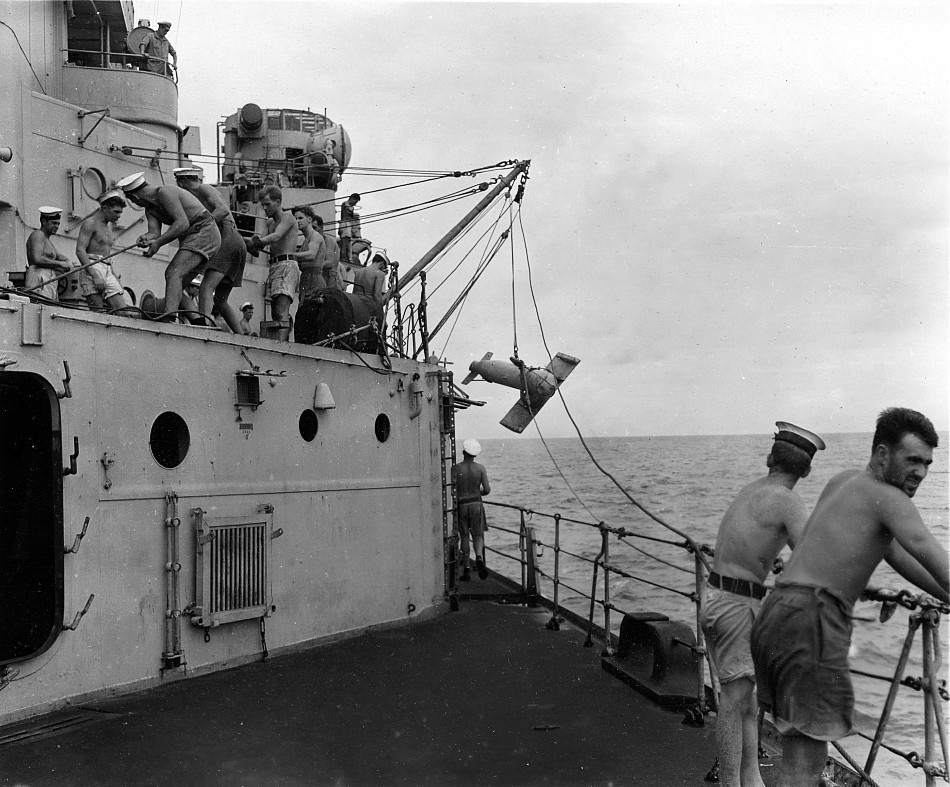
Negative #ON-0038 : A paravane is hoisted up or lowered. Thanks to Michel Rozon who emailed me: " What is being recovered is actually a "Paravane". Paravanes were standard equipment on all big RN and Commonwealth ships light cruiser and above. Some but not all destroyers of various navies carried them. They were a minesweeping device for use against moored mines.
" Depending on circumstances, it was not always possible for minesweepers to precede other naval units so warships often had to do their own minesweeping as a self-defence or self-escort measure. A steel wire cable, with or without cutters attached, was attached to the device pictured and streamed from the port and starboard sides, attached to the forefoot. The steel wire caught, cut and/or sawed the mooring lines of moored mines, which then floated to the surface and were disposed of by small arms or other light weapons. The result was a swath a couple hundred yards wide being swept as the ship moved.
" Such operations were most important when operating in what we would now call "littoral seas". Other than the war in Korea, they ceased being standard equipment in most western navies some time ago. "
Can you provide details or corrections?
Please email Charlie Dobie.
